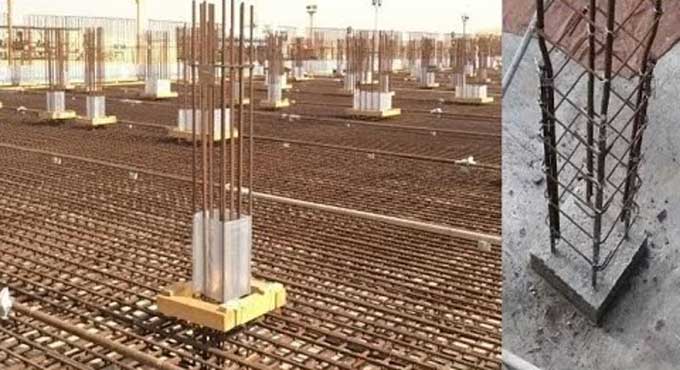
What is the Significance of the Column Kicker in Construction?
Column kickers maintain the correct coordinates of columns or walls between floor slabs by connecting them with a small concrete step. As a result, there should be a column kicker at all locations where columns or walls are being constructed. In addition to ensuring accurate column alignment and location after the kicker is constructed, the formwork of columns or slabs can be placed immediately after completion of the kicker.
Define Column Kicker
The Column Kicker refers to a concrete step built at the base of columns or walls in order to maintain the proper alignment between floor slabs. As a result, column kickers should be used everywhere columns or walls are constructed. Likewise, a column starter is referred to as a column kicker.
The concrete slab is poured in five cm to fifteen cm steps at the base of a column or wall. Exactly the same width and length are found on a column kicker as they are on the column that is being constructed.
Define Column
The definition of a column is a long, slender member that loads axially and has a relatively small lateral dimension compared to its length.
Generally, a column is referred to as a vertical compression member. In the case of an axially loaded column, the longitudinal axis coincides with the center of gravity of the column. In the case of an eccentrically loaded column, the longitudinal axis coincides with the center of gravity.
Column Kicker Workflow
A column is a structure that connects different footings together to transfer the load of a building to them. In addition to concrete with higher compressive strength, you must provide steel of higher quality. It is important to provide composite column cross sections that are both architecturally appealing and suit the space available.
Formwork & Dimensions of Column Kicker
Kickers vary in thickness from 50mm to 150mm; their width and length are identical to those of their corresponding columns. For a column or wall, 150mm is the appropriate height for the column kicker because it provides a satisfactory structural start.
Column kickers which are smaller than 150mm in thickness are not preferred structurally. Over 150mm kickers can slump with the weight of concrete in them if they are thick enough. In order to set fresh concrete monolithically with the slab, the formwork of the column kicker must first be positioned.
Column Kicker Construction Process
Add dirt to the base and stack rocks around the sides and bottom for a strong foundation. It is important to pack the lip firmly, allowing enough room for the concrete to be poured on top.
Add concrete to the lip of the concrete and put a chicken wire frame between the concrete and dirt. Get it all done in one sitting, and do not let the concrete get too wet.
Smoothing out bumps on your lip will keep them forever. Following the setting of the glue, you can shred column kicker.
Column Kicker Applications
The purpose of it is to improve the quality of construction. Columns or walls are aligned with the correct coordinates using it. This column kicker is used for resolving leveling problems.
Column Kicker Merits & Demerits
Column Kicker provides an efficient solution to leveling problems. It supports wall proportions between slabs and controls column movement. Enhance the quality of construction by maintaining the vertical alignment of columns and simplifying column formwork installations. As concrete joints decrease, then the requirement for concrete covers on designated columns increases. Columns and walls may crack and joints may form at the bottom.
To get more details, watch the following video tutorial.
Video Source: The Constructor - Civil Engineering Home


